
Concept explainers
To draw: the graph of given function
Answer to Problem 105E
There is no symmetry in the graph of function.
x- intercept: - (-1, 0), (3, 0), (4.5, 0). So, number of x-intercept is 3.
Explanation of Solution
Given information: given function is
Concept Used: -
Symmetry about x-axis: - A graph is symmetric about x-axis if (x, y) lies on graph than (x, -y) also lies on graph of function.
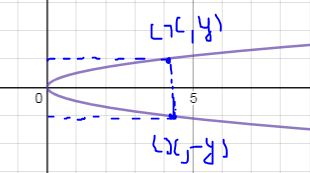
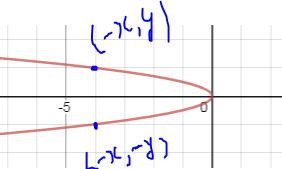
Symmetry about y-axis: - A graph is symmetric about y-axis if (x, y) lies on graph than (-x, y) also lies on graph of function.
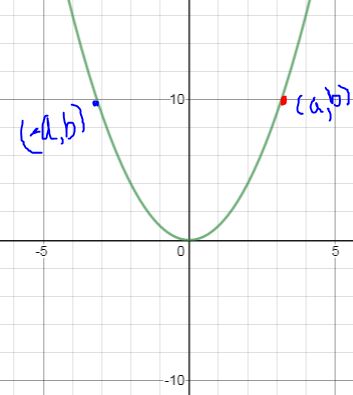
Symmetry about origin: - A graph is symmetric about origin if (x, y) lies on graph than
(-x, -y) also lies on graph of function.
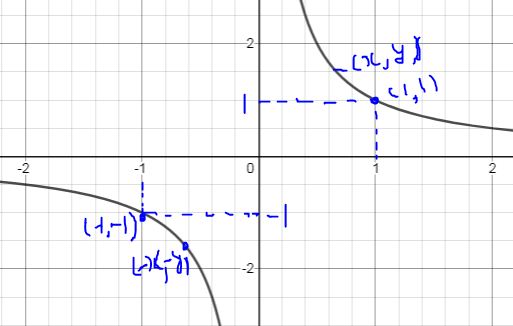
X-intercept: - The point , where graph of function cuts the x-axis.
Calculation:-
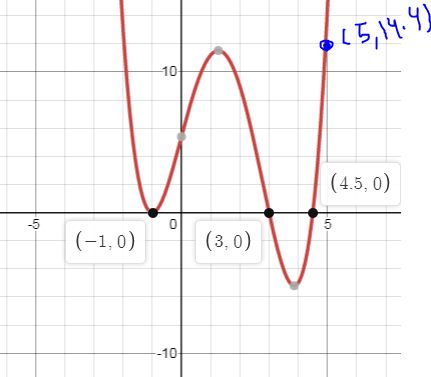
Now, using graph we check symmetries-
- About x-axis:- By using above definition, we marked a point (5, 14.4) on graph but (-5, 14.4) is not present on graph so curve is not symmetric about x-axis.
- About y-axis: - similarly, we can show function is not symmetric about y-axis.
- About origin: - similarly, (-5, -14.4) is not present on graph. So function is not symmetric about origin.
X-intercept: - using graph we can see graph of function cuts the x-axis at (-1, 0), (3, 0), (4.5, 0).
So, number of x-intercept is 3.
Chapter 2 Solutions
EP PRECALC.GRAPHING APPR.-WEBASSIGN-1YR
- Find the accumulated amount A, if the principal P is invested at an interest rate of r per year for t years. (Round your answer to the nearest cent.) P = $3800, r = 4%, t = 10, compounded semiannually A = $ 5645.60 × Need Help? Read It SUBMIT ANSWER [3.33/6.66 Points] DETAILS MY NOTES REVIOUS ANSWERS ASK YOUR TEACHER TANAPCALC10 5.3.001.EP. PRACTICE ANOTHER Consider the following where the principal P is invested at an interest rate of r per year for t years. P = $3,100, r = 4%, t = 10, compounded semiannually Determine m, the number of conversion periods per year. 2 Find the accumulated amount A (in dollars). (Round your answer to the nearest cent.) A = $ 4604.44arrow_forwardForce with 800 N and 400 N are acting on a machine part at 30° and 60°, respectively with a positive x axis, Draw the diagram representing this situationarrow_forwardI forgot to mention to you to solve question 1 and 2. Can you solve it using all data that given in the pict i given and can you teach me about that.arrow_forward
 Calculus: Early TranscendentalsCalculusISBN:9781285741550Author:James StewartPublisher:Cengage Learning
Calculus: Early TranscendentalsCalculusISBN:9781285741550Author:James StewartPublisher:Cengage Learning Thomas' Calculus (14th Edition)CalculusISBN:9780134438986Author:Joel R. Hass, Christopher E. Heil, Maurice D. WeirPublisher:PEARSON
Thomas' Calculus (14th Edition)CalculusISBN:9780134438986Author:Joel R. Hass, Christopher E. Heil, Maurice D. WeirPublisher:PEARSON Calculus: Early Transcendentals (3rd Edition)CalculusISBN:9780134763644Author:William L. Briggs, Lyle Cochran, Bernard Gillett, Eric SchulzPublisher:PEARSON
Calculus: Early Transcendentals (3rd Edition)CalculusISBN:9780134763644Author:William L. Briggs, Lyle Cochran, Bernard Gillett, Eric SchulzPublisher:PEARSON Calculus: Early TranscendentalsCalculusISBN:9781319050740Author:Jon Rogawski, Colin Adams, Robert FranzosaPublisher:W. H. Freeman
Calculus: Early TranscendentalsCalculusISBN:9781319050740Author:Jon Rogawski, Colin Adams, Robert FranzosaPublisher:W. H. Freeman
 Calculus: Early Transcendental FunctionsCalculusISBN:9781337552516Author:Ron Larson, Bruce H. EdwardsPublisher:Cengage Learning
Calculus: Early Transcendental FunctionsCalculusISBN:9781337552516Author:Ron Larson, Bruce H. EdwardsPublisher:Cengage Learning





